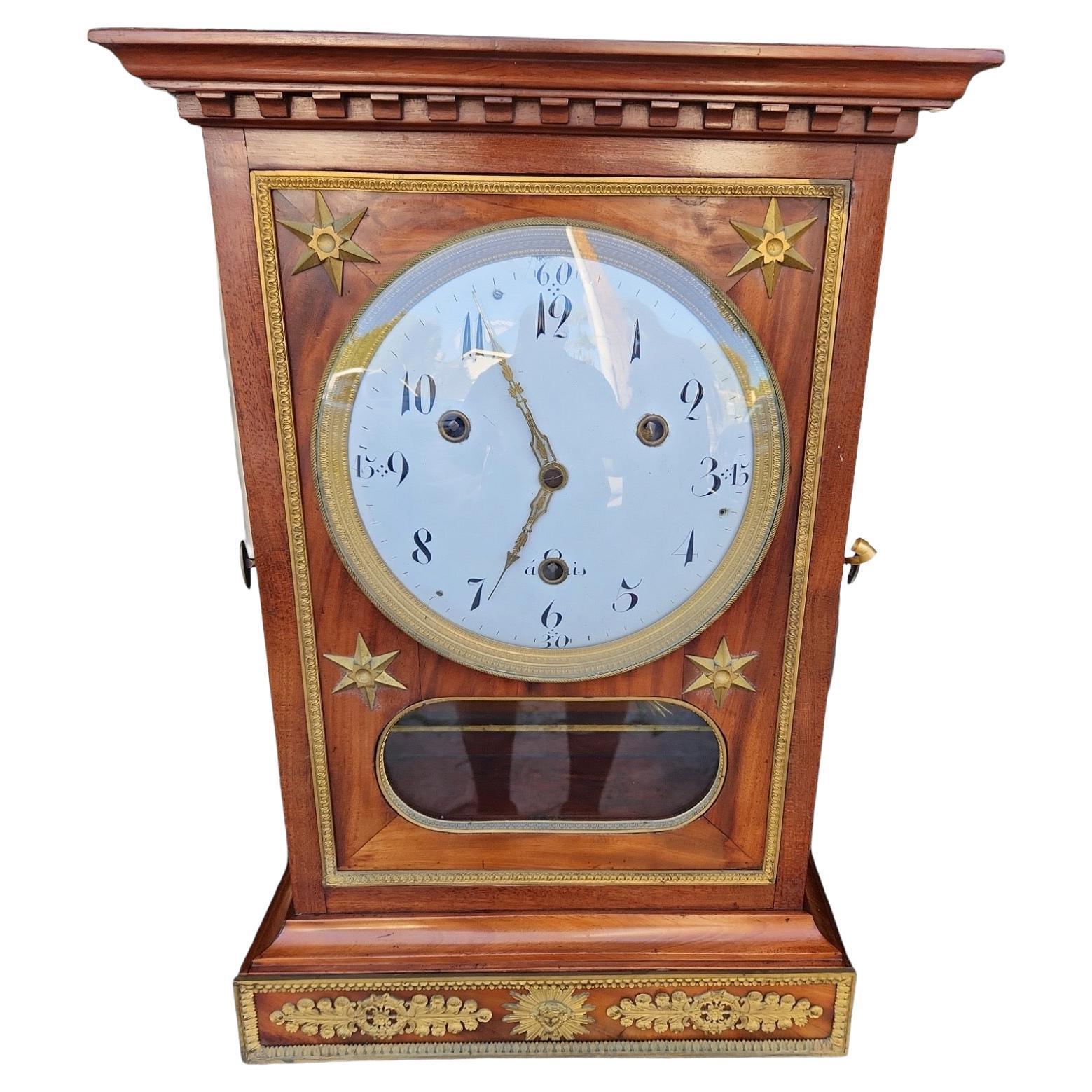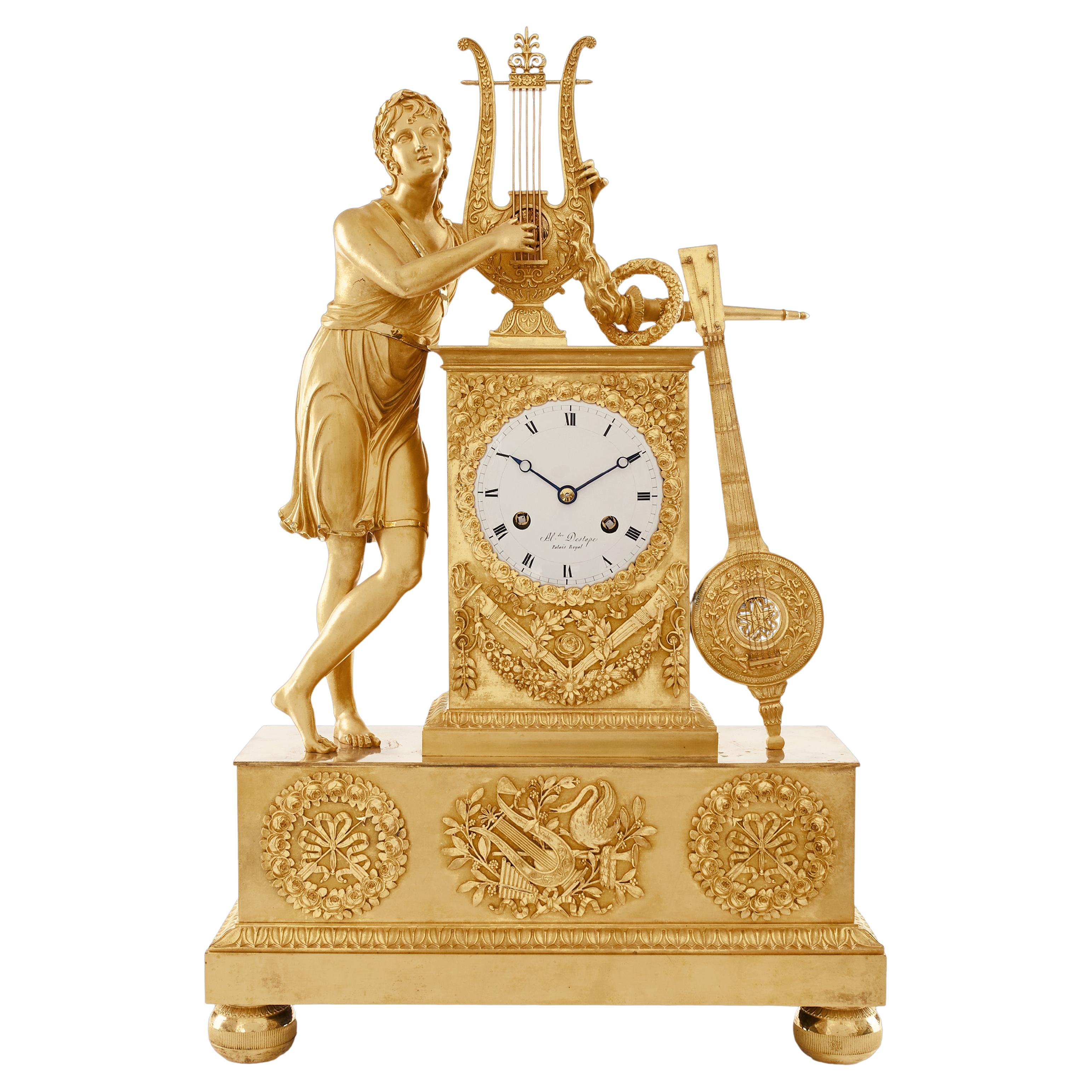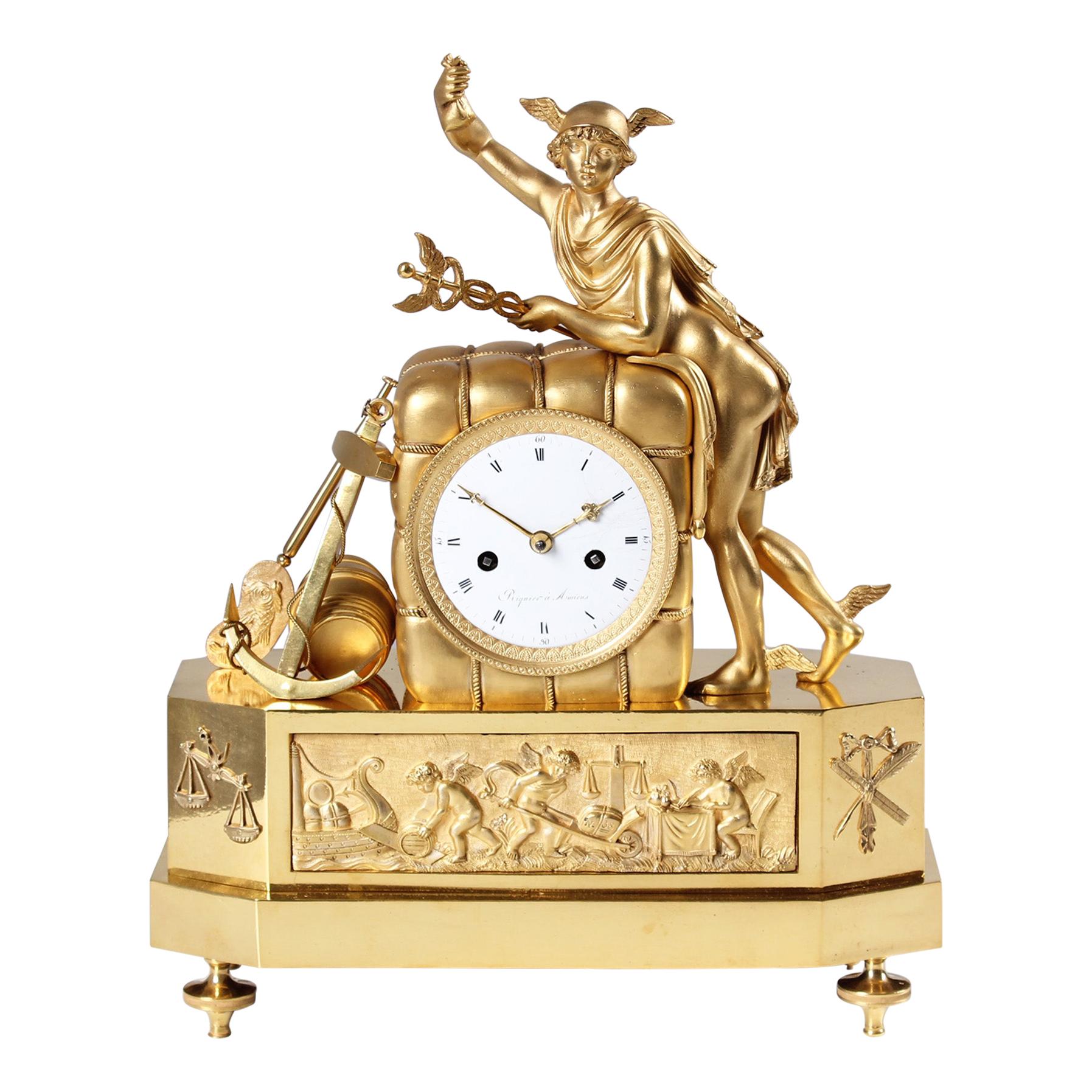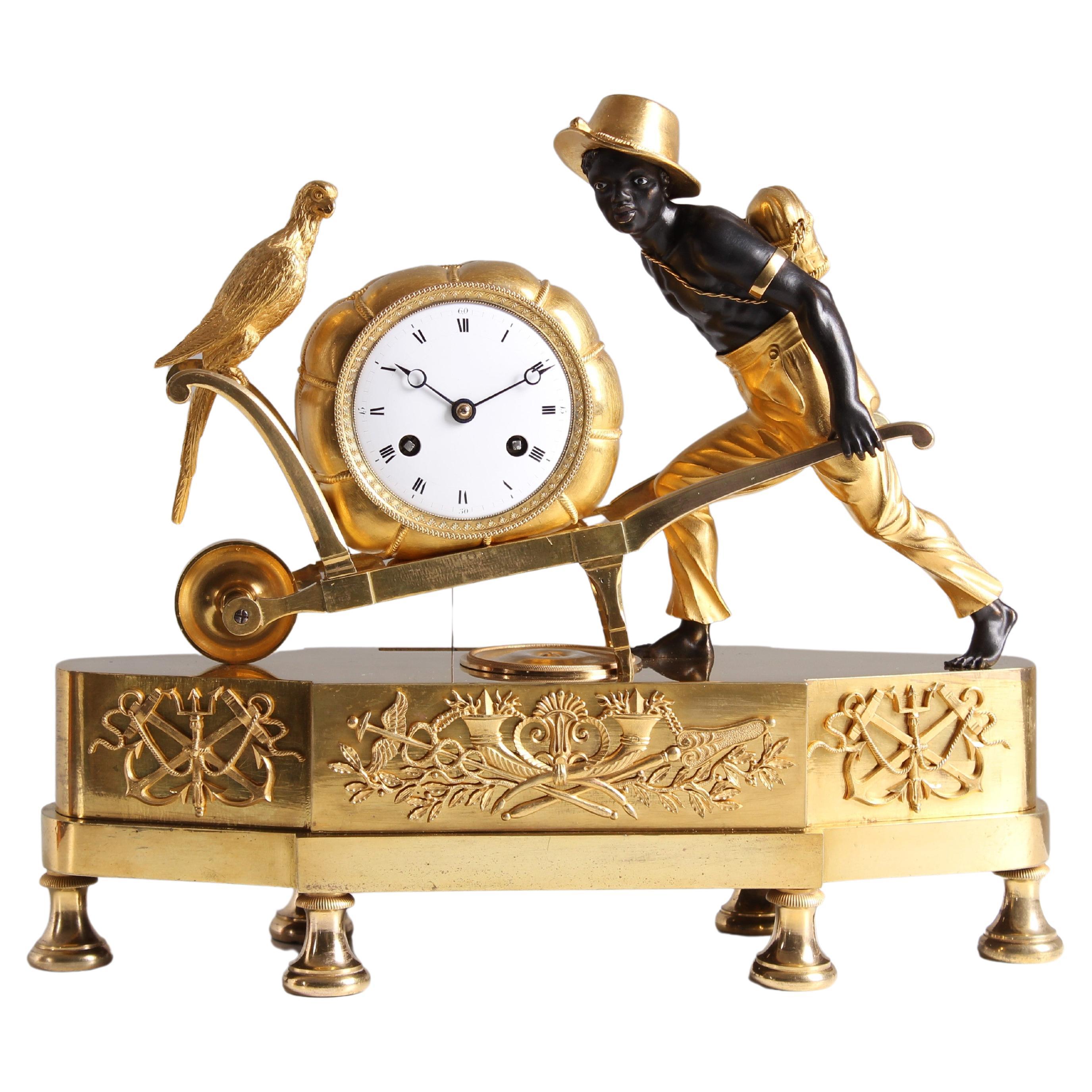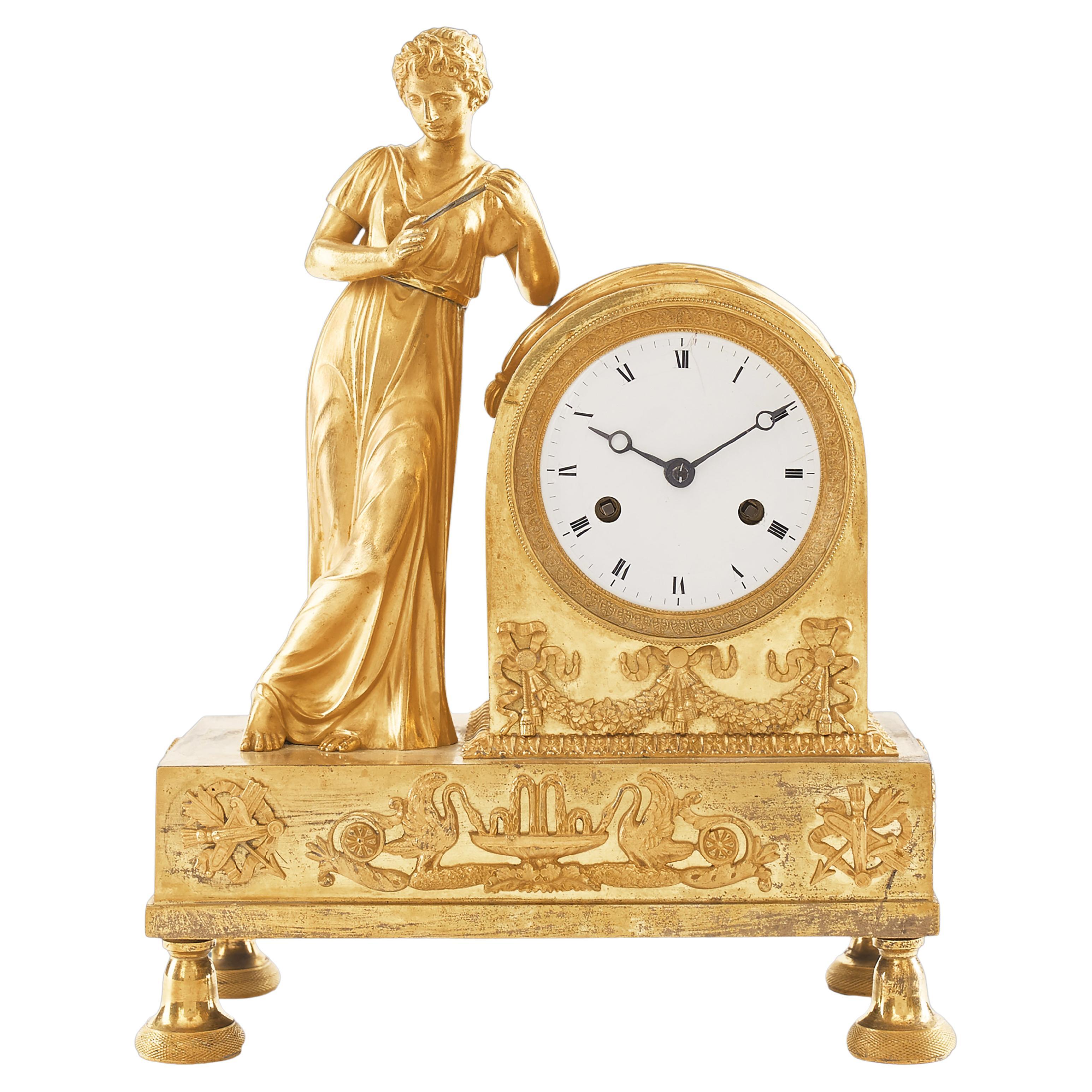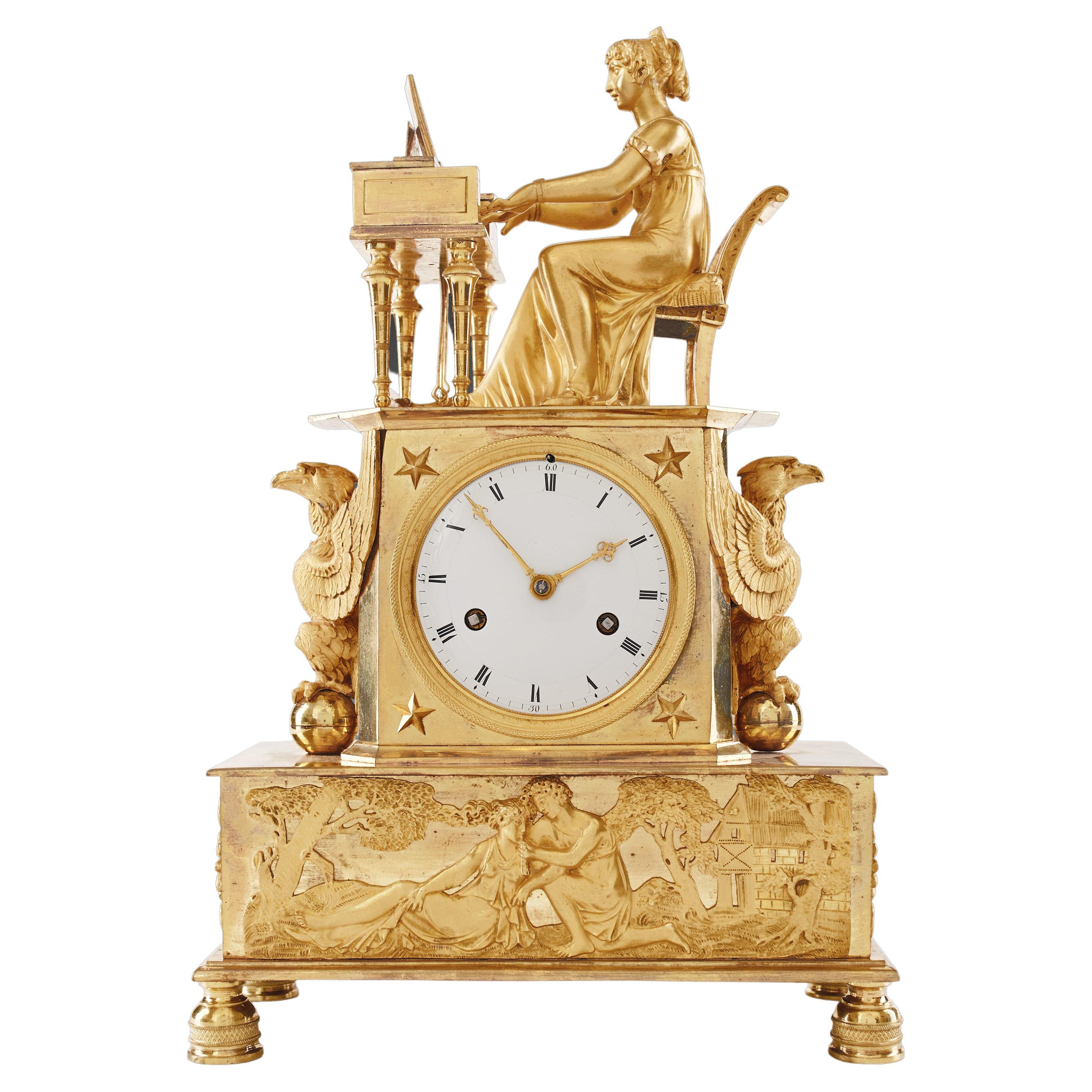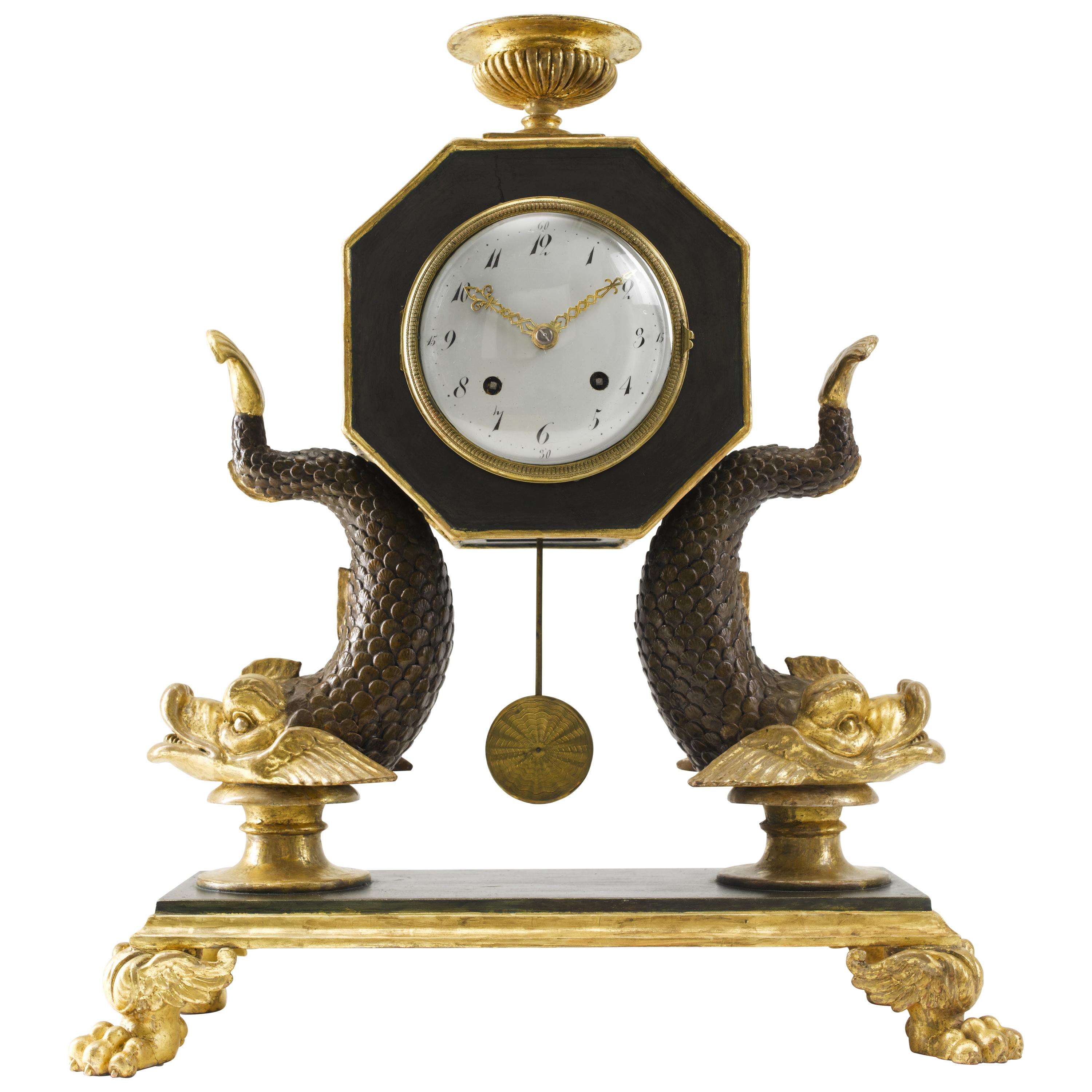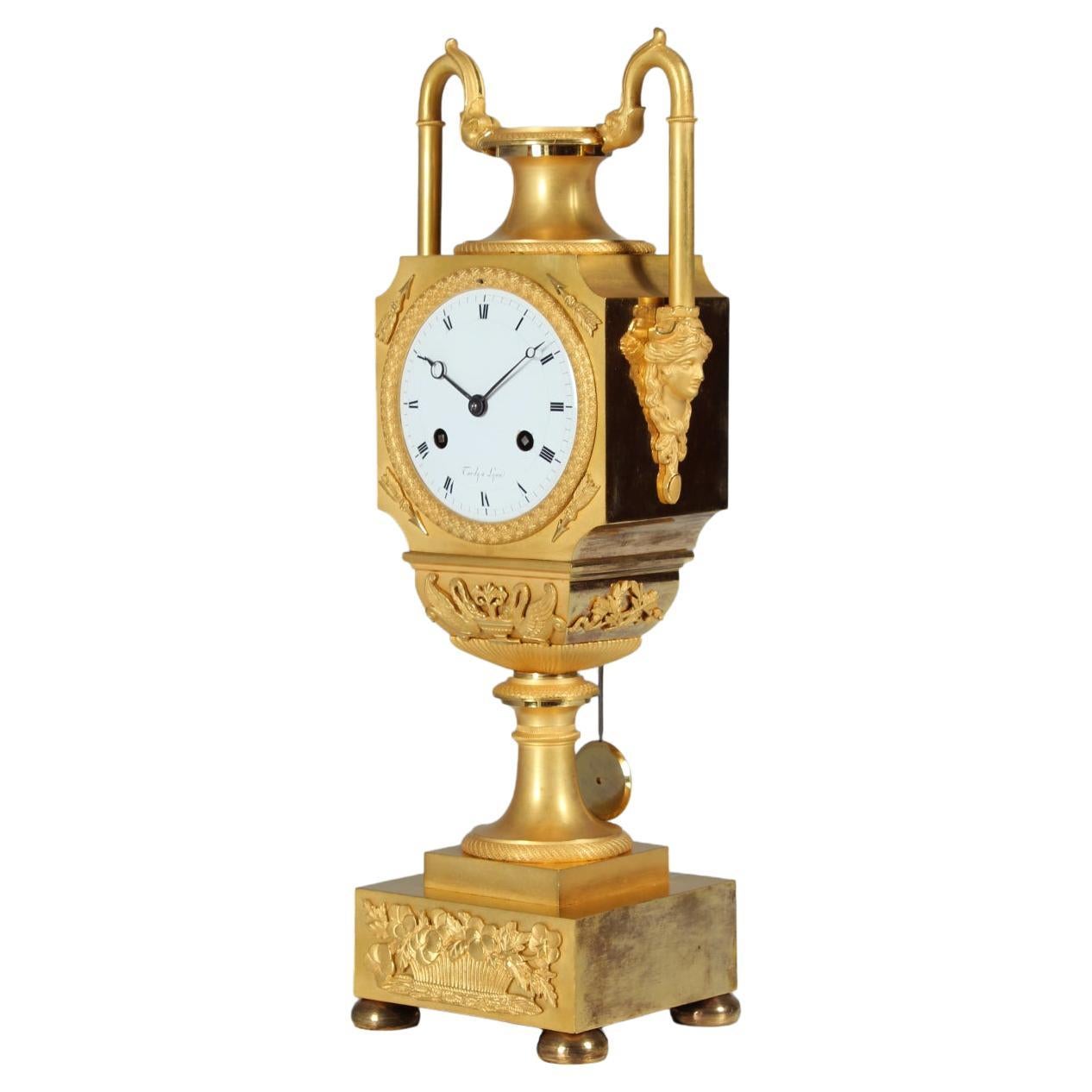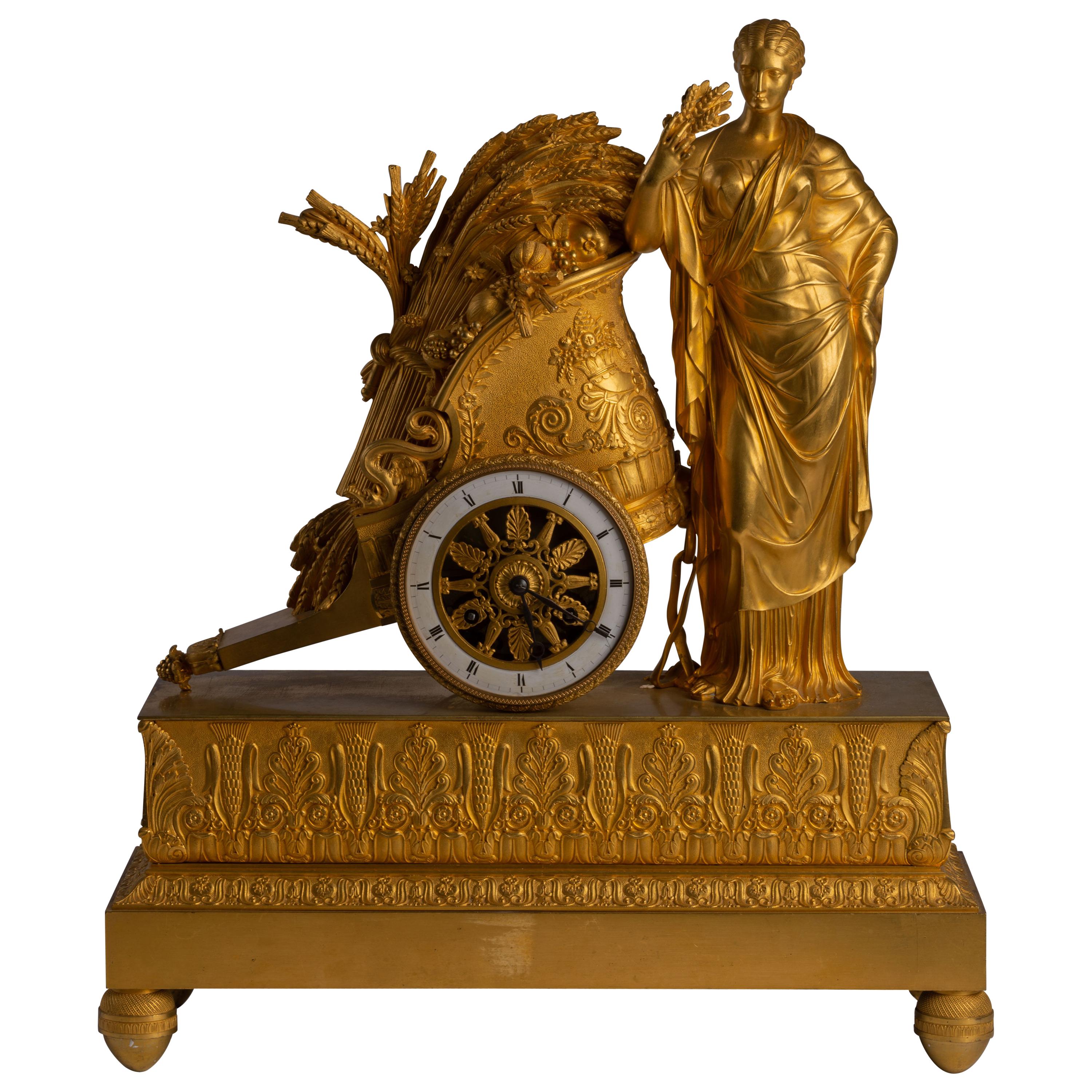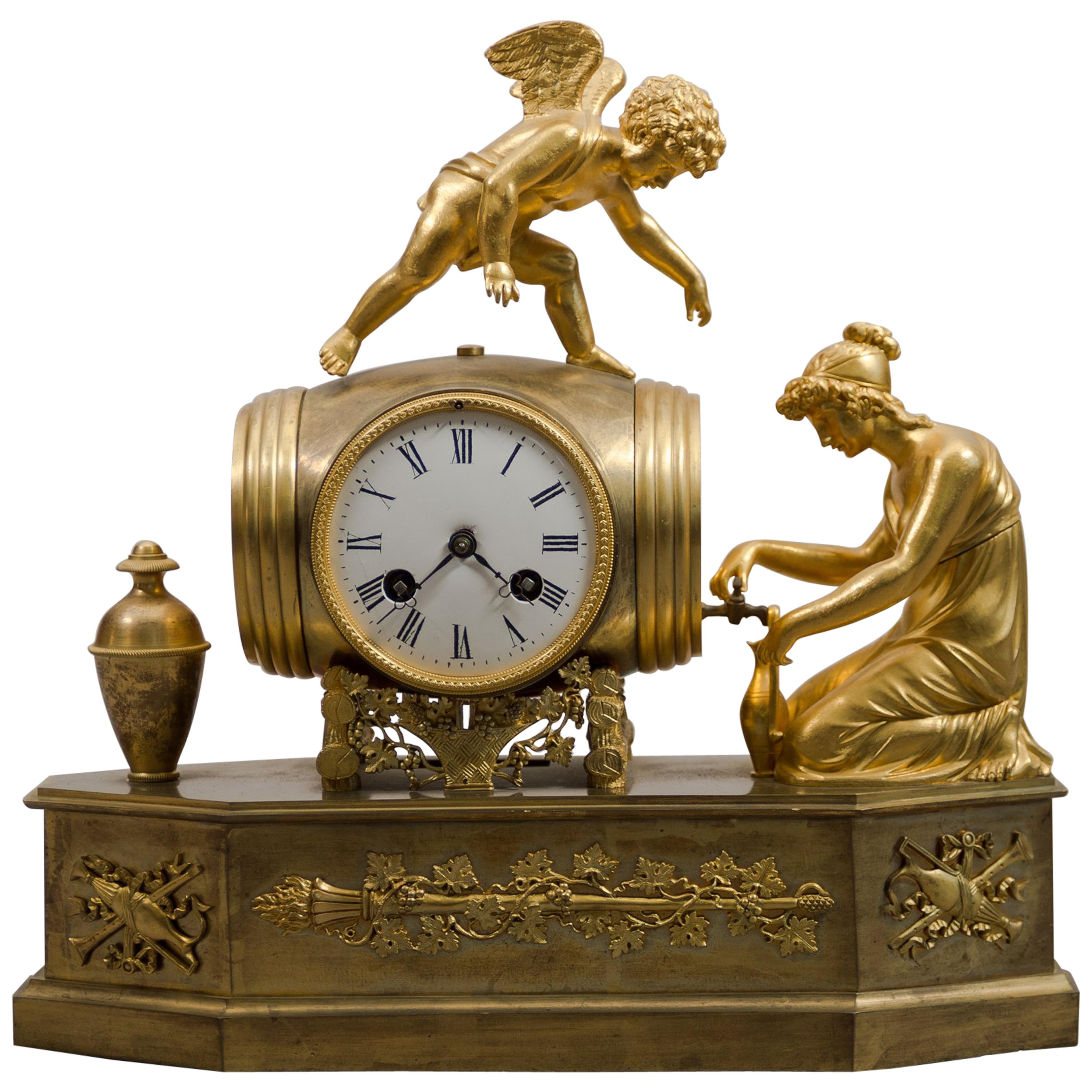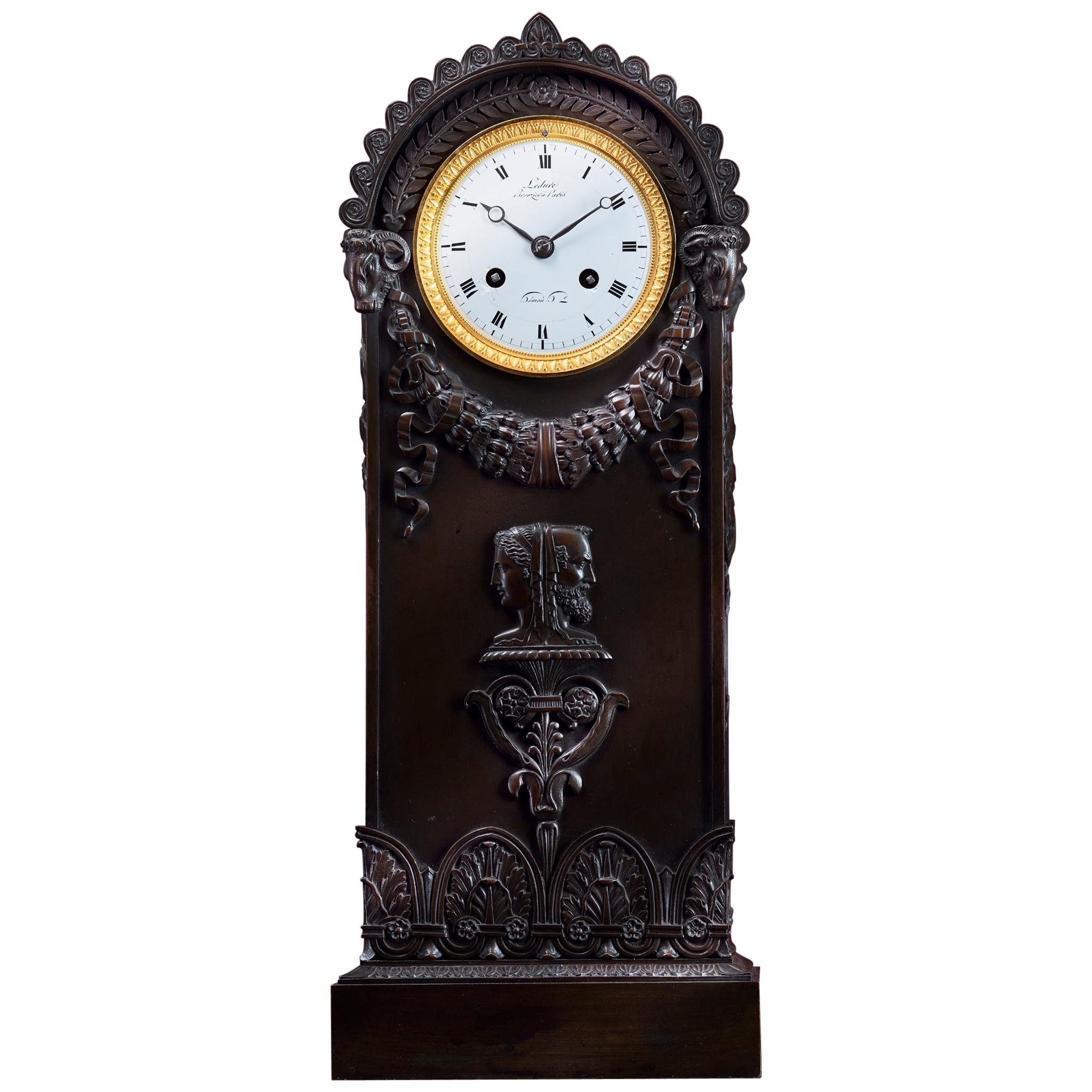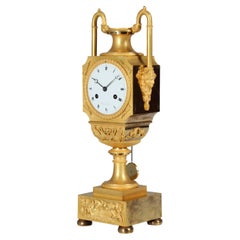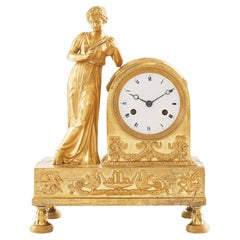
Early 19th Century Mantel Clock, Pendule, La Lieuse, La Lecture, Empire, c. 1810
View Similar Items
Video Loading
Want more images or videos?
Request additional images or videos from the seller
1 of 18
Early 19th Century Mantel Clock, Pendule, La Lieuse, La Lecture, Empire, c. 1810
About the Item
- Creator:Jean-André Reiche (Sculptor)
- Dimensions:Height: 12.6 in (32 cm)Width: 11.82 in (30 cm)Depth: 5.91 in (15 cm)
- Style:Empire (Of the Period)
- Materials and Techniques:
- Place of Origin:
- Period:
- Date of Manufacture:1810
- Condition:Very nice restored condition.
- Seller Location:Greven, DE
- Reference Number:1stDibs: LU5419232079002
About the Seller
5.0
Platinum Seller
These expertly vetted sellers are 1stDibs' most experienced sellers and are rated highest by our customers.
Established in 2014
1stDibs seller since 2020
119 sales on 1stDibs
More From This SellerView All
- 19th French Empire Mantel Clock, Pendule, Mercury, Gilded Bronze, circa 1815Located in Greven, DE19th century French pendule, mantel clock - Mercury the messenger of the gods France Bronze gilded Empire around 1815 Dimensions: H x W x D: 37 x 30 x 10 cm Description: French Empire...Category
Antique Early 19th Century French Empire Mantel Clocks
MaterialsBronze
$6,778 Sale Price30% Off - Early 19th Century Mantel Clock, Firegilt Bronze, Paris circa 1810Located in Greven, DEVery rare "Au Bon Sauvage" mantel clock France Fire-gilt and patinated bronze Empire around 1810 Dimensions: H x W x D: 34 x 41 x 13 cm Description: Extremely rare French bronze m...Category
Antique Early 19th Century French Empire Mantel Clocks
MaterialsBronze
- Early 19th Century Vase Pendule, Pendulum-Clock, Tardy à Lyon, Empire circa 1820Located in Greven, DEAntique vase clock France Fire gilded bronze Empire around 1820 Dimensions: H x W x D: 41 x 13 x 12 Description: Beautiful all gilt French mantel clock. The basic form is in the shape of an urn vase with lid...Category
Antique Early 19th Century French Empire Mantel Clocks
MaterialsBronze, Enamel
- Early 19th Century Ormolu Mantel Clock, Atala freeing Chactas, Paris, circa 1810Located in Greven, DEMantel Clock "Atala and Chactas" Paris Bronze (fire-gilt and patinated), enamel Empire around 1810 Dimensions: H x W x D: 40 x 32 x 11 cm Description: Very rare and extremely high quality French mantel clock, so-called Pendule Au Bon Sauvage. Depicted are scenes from the love story "Atala or the love of two savages in the desert" written by Francois René Vicomte de Chateaubriand in 1801. At the beginning of the 19th century, this was probably the most famous love story in Europe, but today it has been forgotten. The story, set in present-day Louisiana (USA), is roughly rewritten about the forbidden love between Chactas, a young Indian, and Atala, the beautiful daughter of a Spaniard. Chactas is captured in a battle between two Indian tribes, chained to a palm tree and is to be sacrificed. Atala wants to save his life and convert him to Christianity. She unties him from the palm tree at night and they flee together into the wilderness of North America. Their love for each other grows stronger and stronger and they have prospects for a future together. The story takes a tragic turn when Atala, who must remain a virgin due to a vow made by her mother, can no longer withstand the conflict of her feelings and commits suicide. The main group of characters thus shows Chacta's liberation through Atala. Atala is leaning against a pile of logs. The animal fur thrown over the logs and the weapons leaning against the stack on the right give the impression of a night camp. The bronze is of rarely beautiful quality, finely chiselled and makes the scene appear very lively. The contrast of fire-gilded and patinated bronze adds tension to the composition. In the base we see the Entombment as the end of the tragic love story. This bronze work is also very detailed, the interplay of bright and matt gilding makes the flat relief appear much deeper than it is. The depiction of the mantel clock presented here shows that the exotic was only known from stories and that the bronzier had his own ideas about the appearance of this distant world. The Indian, for example, has very European facial features and his skin was not black in reality, of course. The palm tree was also certainly not found in the North American wilderness. The heart of the clock is a French pendulum movement, integrated into the wooden pile, with an eight-day power reserve and a lock plate striking a bell on the half and full hour. The pendulum is suspended on a thread, typical of the period. The classically shaped hands, so-called Breguet hands, are also typical of the time. The enamelled dial has black Roman hour numerals, Arabic quarter hours and bears the signature: Le Roy hr. de Madame A PARIS. Interesting facts: The period from 1795 to about 1815 saw the creation of probably the most spectacular group of bronzes: The "Au bon Sauvage" pendulums - depictions of the "Noble Savage". Today's viewers react to these objects with both fascination and irritation. Enthusiastic on the one hand about the obvious quality of the detailed bronzes and the allure of the exotic, on the other hand distanced and cautious because of the possible discrimination that is suspected behind them. The ambivalence of this feeling motivates the search for the conditions of origin of these pendulums. Europeans found their new ideal of the natural man primarily in fictional and realistic travelogues about the Indians of North America...Category
Antique Early 19th Century French Empire Mantel Clocks
MaterialsOrmolu
- 19th Century Miniatur Mantel Clock, Gare La Bombe, Cupido, France, Gilded BronzeLocated in Greven, DEPendulette "Gare La Bombe" France gilded bronze first half 19th century Dimensions: H x W x D: 20 x 15 x 7 cm Description: Antique miniature mante...Category
Antique Early 19th Century French Empire Mantel Clocks
MaterialsBronze
- 19th Century Travel Clock with Repetition, Carriage Clock, Pendule de VoyageLocated in Greven, DETravel clock with repetition France Brass 19th century Dimensions: H x W x D: 11 x 7,5 x 4,5 cm Description: Small travel clock, so-call...Category
Antique 19th Century French Carriage Clocks and Travel Clocks
MaterialsBrass
You May Also Like
- 19th Century Empire Mantel ClockLocated in Los Angeles, CAExcellent condition with finely chased dore bronze mounts. Has key and pendulum.Category
Antique Early 19th Century French Empire Mantel Clocks
MaterialsBronze
- Mantel Clock 19th Century EmpireLocated in Warsaw, PLFigural mantel clock signed “Al. dre Destape Palais Royal” The bronze figural mantel clock depicting one of the mythical heroes - Orpheus originates from the Empire period. The cloc...Category
Antique Early 19th Century French Empire Mantel Clocks
MaterialsBronze
- Mantel Clock 19th Century Styl EmpireLocated in Warsaw, PLEmpire style figural mantle clock from the beginning of the 19th century. This mantel clock is known also as the “Allegory of love”, as the woman featured in this clock is holding on...Category
Antique Early 19th Century French Empire Mantel Clocks
MaterialsBronze
- Mantel Clock 19th Century Styl EmpireLocated in Warsaw, PLThis ormolu clock from the 19th century has a rectangular base with four feet carved with small patterns. The figure on top represents a lady playing on the spinet and on sides of th...Category
Antique Early 19th Century French Empire Mantel Clocks
MaterialsBronze
- Early 19th Century Viennese Empire Carved Wood Mantel ClockLocated in Worpswede / Bremen, DEThe octagonal shaped case surmounted by a classical vase on dolphin supports, white enamel dial, eight-day going clock movement striking the half- and full hours.Category
Antique 19th Century Austrian Empire Mantel Clocks
MaterialsGesso, Wood
- Empire Ormolu Mantel Clock 'Pendule au char'Located in Kittery Point, METhe rectangular base decorated with a wheat and foliate frieze and raised on four ball feet, the goddess of agriculture Ceres standing while leaning against a Roman chariot with harv...Category
Antique Early 19th Century French Empire Mantel Clocks
MaterialsBronze
Recently Viewed
View AllMore Ways To Browse
Antique Furniture La
1810 Empire
Objects Plus
Decorative Antique Books
C 1810
19th C Empire
Decorative Disc
Half Empire
19th Century Empire Clock
Early 19th Century French Clock
Full Mantel
Blanc Antique
19th Century Mantel Marble Clock
18th Century Clock Movement
French Empire Mantel
18th Century French Empire
Royal Palais
Green Mantel
